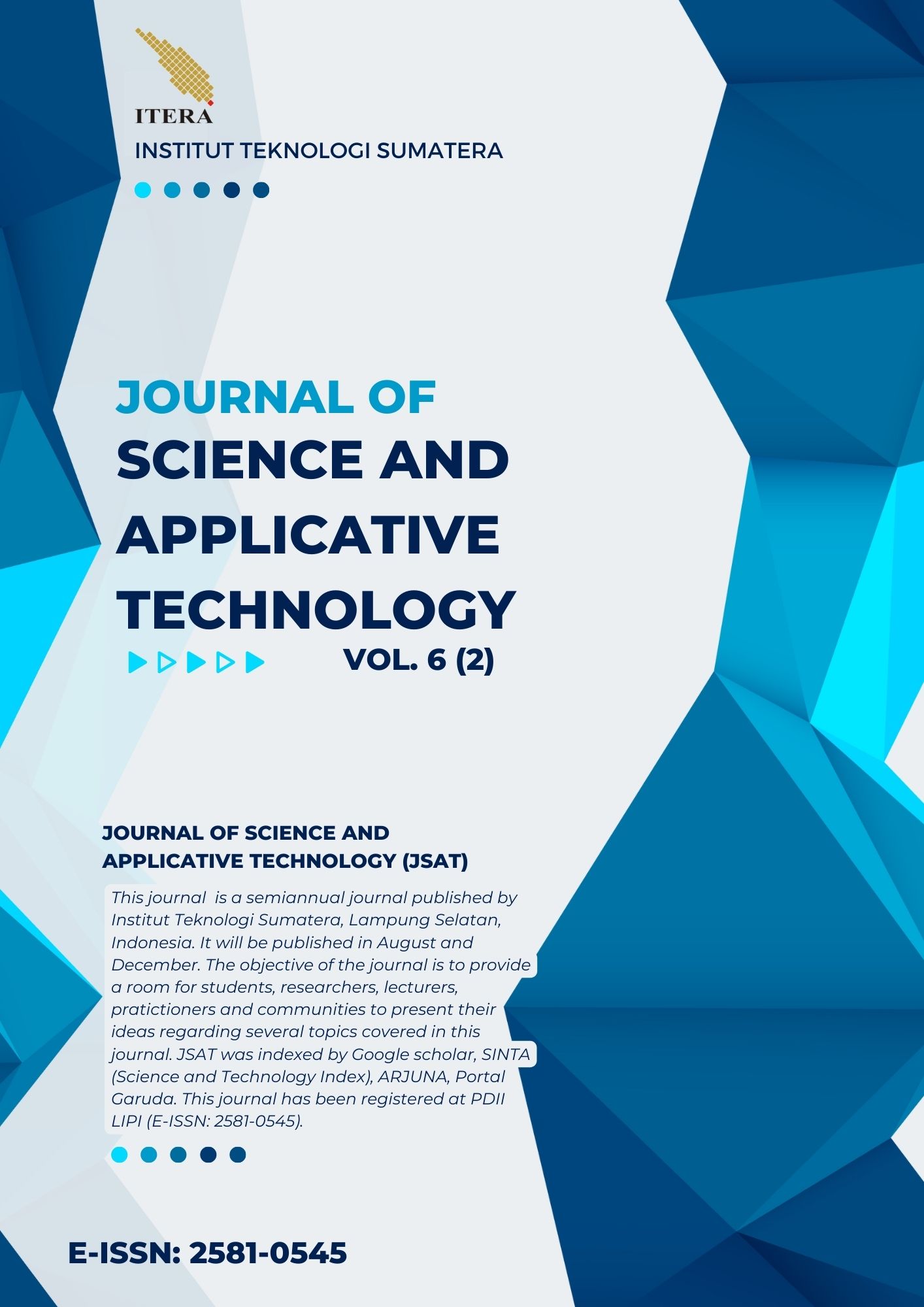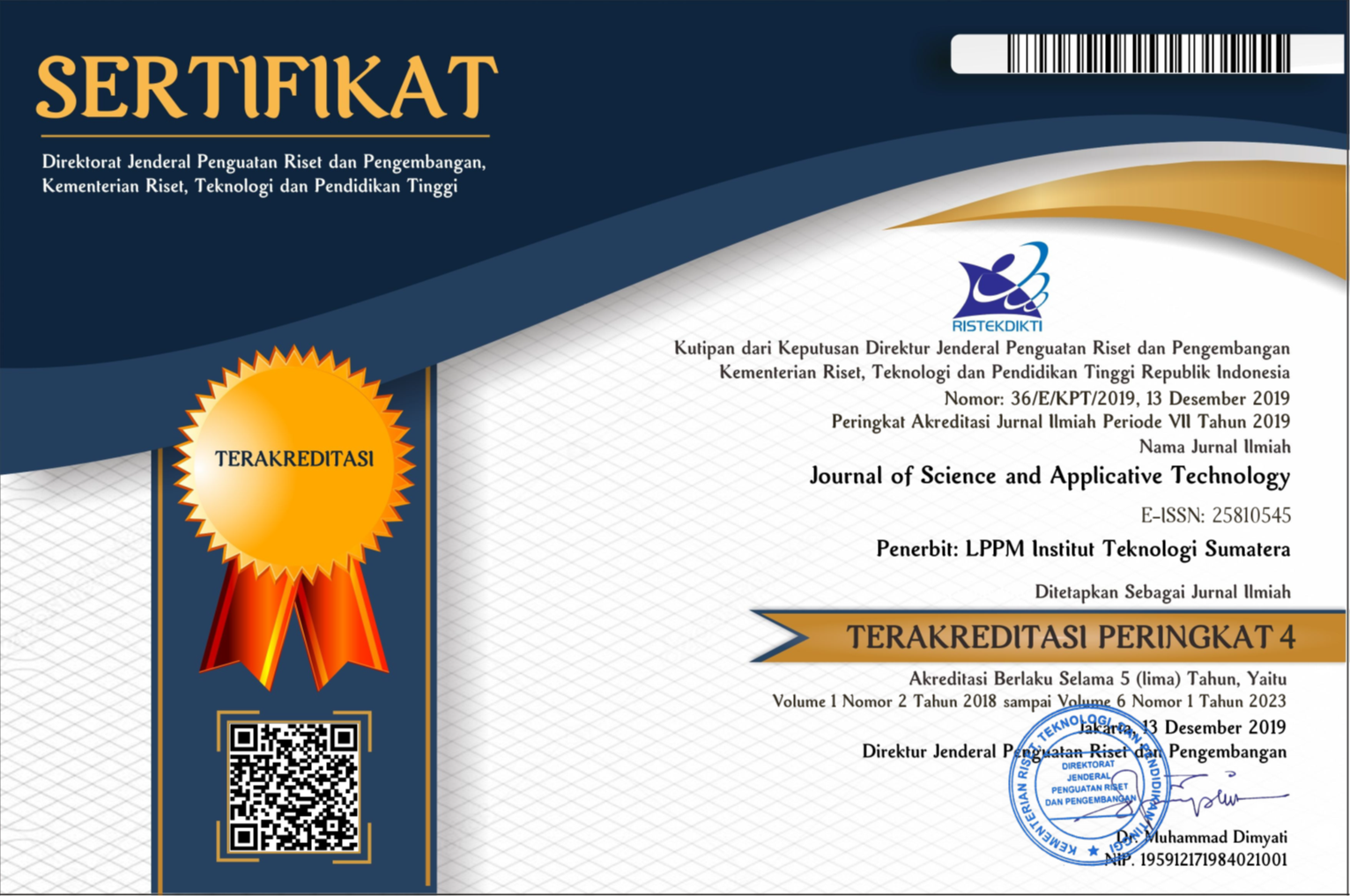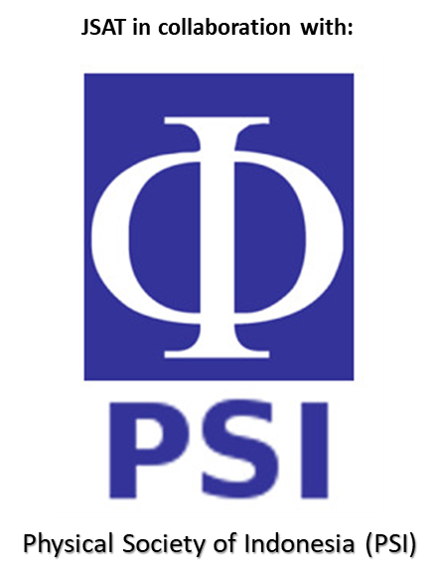PEMODELAN PENGINDERAAN JAUH UNTUK ESTIMASI SIMPANAN KARBON DI BLOK 1 PT ALAM BUKIT TIGAPULUH
Abstract
Biomass calculations are useful for knowing the amount of carbon stored in a forest ecosystem and essential steps to mitigate global warming and climate change. Restoration activities at PT Alam Bukit Tigapuluh (PT ABT) have indirectly made efforts to absorb carbon dioxide (CO2). This study aimed to analyze and measure carbon storage as well a model and map carbon storage at PT ABT. The method used the survey method of species, diameter at breast height, and vegetation height with a plot size of 20mx20m. The research conducted to analyze carbon storage and build a regression model. The results showed that the average carbon storage of the 30 plots was 259.32 tons/ha and the estimated carbon storage is 5,496,233 tC. The best regression model’s modelling result are Y = -817 + 331.5 MSRVI with the correlation of determination being 76.40%. The distribution of carbon storage in PT ABT is divided into 5 classes, namely, non-vegetated class (<0 tons/ha) of 57 ha, low (0-112.55 tons/ha) of 291 ha, medium (112.55-225.11 tons/ha) covering an area of 2,059 ha, high (225.11-337.67 tons/ha) covering an area of 18,533 ha and very high (>337.67 tons/ha) covering an area of 1,256 ha.
Downloads
References
O. P. “Pemetaan Cadangan Karbon dan Biomassa Tegakan
Tanaman Mangrove Di Tahura Ngurah Rai Dengan
Menggunakan Data Penginderaan Jauh”. Disertasi. Program
Studi Ilmu Kelautan Fakultas Kelautan dan Perikanan Universitas
Udayana, Februari, 2015.
[2] Mastur, Agus Kurniawan, Eva Achmad, dan Bremi Renata
Simbolon. “Pendugaan Biomassa Atas Permukaan di KPHP Unit
X Tebo Timur”. Jurnal Silva Tropika. Vol. 5 No. 1, 30 Juni 2021
[3] Arief Prasetyo, Agus Hikmat, dan Lilik Budi Parsetyo. “Pendugaan Perubahan Cadangan Karbon di Tambling Wildlife Nature Conservation Taman Nasional Bukit Barisan Selatan”. Media Konservasi Vol, 16, No, 2, pp : 87 – 9, Agustus 2011.
[4] Arifin, S., Manalu, J., Kartika, T., Yulianto, F., Julzarika, A., Mukhoriyah, Sukowati, K. A. D., dan Nugroho, G. “Metode Pemantauan Eksploitasi dan Reklamasi Tambang Batubara Menggunakan Data Sentinel – 2”. Jurnal Penginderaan Jauh dan Pengolahan Data Citra Digital Vol.17 No.2 Desember 2020.
[5] Andianto, R., dan Handayani, H.H. “Studi Indeks Vegetasi untuk Identifikasi Vegetasi Hutan Gambut Menggunakan Citra Airborne Hyperspectral Hymap di Daerah Hutan Gambut Kalimantan Tengah”. GEOID Vol. 09, No. 02, Februari 2014 (186-194).
[6] Que, Sitanayah, V. K., Prasetyo, S. Y. J., dan Fibriani, C. “Analisis Perbedaan Indeks Vegetasi Normalized Difference Vegetation Index (NDVI) dan Normalized Burn Ratio (NBR) Kabupaten Pelalawan Menggunakan Citra Satelit Landsat 8”. Indonesian Journal of Modeling and Computing 1 (2019) 1-7.
[7] Muchlis Hidayat. “Analisis Vegetasi dan Keanekaragaman Tumbuhan di Kawasan Manifestasi Geothermal IE Suum Kecamatan Mesjid Raya Kabupaten Aceh Besar”. Jurnal Biotik, Vol, 5, No, 2, Ed, pp : 114-124, September 2017.
[8] Sugiyono. Metode Penelitian Kuantitatif. Jakarta: Rajawali, 2010.
[9] Rahmah, Kuswata Kartawinata, Nisyawati, Wisnu Wardhana dan Erwin Nurdin. “Tree Species Diversity In The Lowland Forest Of The Core Zone Of The Bukit Duabelas National Park, Jambi, Indonesia”. Reinwardtia, Journal On Taxonomic Botany, Plant Sociology and Ecology Vol, 15 (1), pp : 1 – 65, June 27, 2016.
[10] Qirom dan Muhammad Abdul. “Potensi Jenis Meranti Putih dalam Penyerapan Karbon untuk Mitigasi Perubahan Iklim”. Prosiding Seminar Nasional Silvikultur V, 2018.
[11] Nirwana Simamarta, Fitralia Elyza, dan Rezalian Vatiady. “Kajian Citra Satelit SPOT-7 Untuk Estimasi Standing Carbon Stock Hutan Mangrove Dalam Upaya Mitigasi Perubahan Iklim (Climate Changes) di Lampung Selatan”. Jurnal Penginderaan Jauh Vol, 16 No, 1, pp : 1 – 8, Juni 2019.
[12] Hair, Jr,, Joseph F. “Multivariate Data Analysis, Fifth Edition”. New Jersey: PrenticeHall, Inc, 2011.
Copyright (c) 2022 Journal of Science and Applicative Technology

This work is licensed under a Creative Commons Attribution-NonCommercial 4.0 International License.
All the content on Journal of Science and Applicative Technology (JSAT) may be used under the terms of the Creative Commons Attribution-NonCommercial 4.0 International License.
You are free to:
- Share - copy and redistribute the material in any medium or format
- Adapt - remix, transform, and build upon the material
Under the following terms:
- Attribution - You must give appropriate credit, provide a link to the license, and indicate if changes were made. You may do so in any reasonable manner, but not in any way that suggests the licensor endorses you or your use.
- NonCommercial - You may not use the material for commercial purposes.
- No additional restrictions - You may not apply legal terms or technological measures that legally restrict others from doing anything the license permits.





















